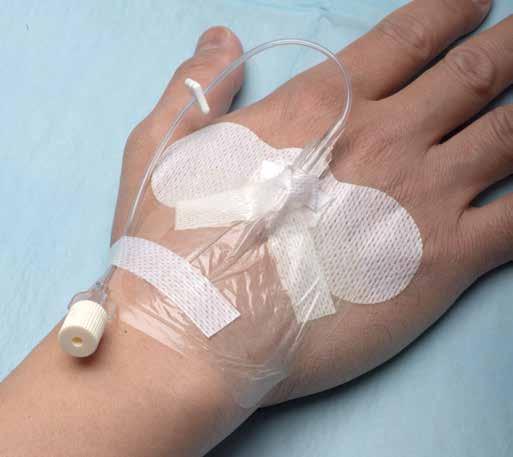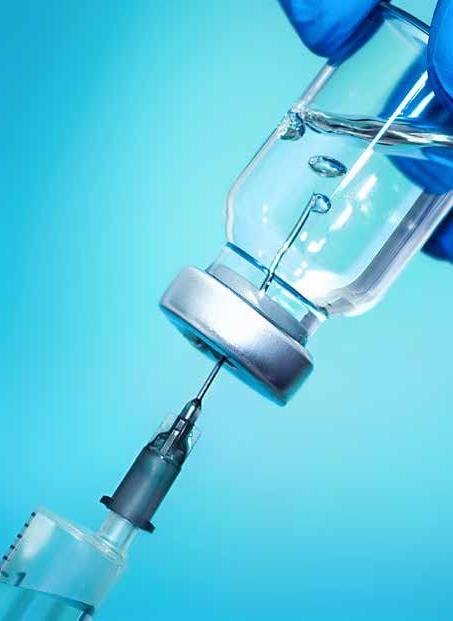
7 minute read
Industry Prepared for COVID-19 Vaccine
from JHC October 20
The race to develop a COVID-19
vaccine has been in the public eye since spring. The race to provide enough needles, syringes and glass vials to administer it has been somewhat lower key. Still, it hasn’t been without nervous moments.
For example, in early May, Rick Bright, former deputy assistant secretary for preparedness and response and director of the Biomedical Advanced Research and Development Authority (BARDA), warned that the nation’s stockpile of needles and syringes was only 2% of the required amount. (In addition to anticipating a two-shot vaccine, Bright’s calculations included about 180 million more syringes for an increase in requests for flu shot, reported USA Today.)
Questions about the vaccine remain. For example, when will it be available? How quickly will it be rolled out? Will it be injected, or taken orally or nasally? Will it be delivered in pre-filled syringes? Will one injection be enough to achieve immunization, or will two injections be needed? How many Americans will actually get vaccinated?
Alarms were raised this spring and summer about potential shortages of vaccine-related products. Despite the uncertainty, industry experts expressed confidence the country would avoid situations such as the PPE shortages experienced earlier in the year. Feds take action The federal government has taken an active role, contracting for 820 million syringes, including 420 million by the end of 2020 and the rest in 2021, reported USA Today. ʯ In May, BARDA – part of the
Department of Health and Human
Services’ Office of the Assistant
Secretary for Preparedness and
Response – awarded contracts for needles and syringes for approximately $110 million to
Retractable Technologies (Little
Elm, Texas) and Marathon Medical
(Aurora, Colorado) for 320 million needles and syringes, and to Franklin Lakes, New Jersey-based Becton Dickinson for approximately $11 million for 50 million units of needles and syringes.
ʯ
Also in May, the Department of Defense and HHS announced a $138 million contract with ApiJect Systems America for U.S.-based manufacturing capacity that could produce approximately 100 million pre-filled syringes using the company’s “blowfill-seal” technology in 2020, and more than 500 million through 2021. In mid-July, Smiths Medical announced a partnership with BARDA and the Department of Defense to expand capacity at its facility in Keene, New Hampshire, for production of integrated hypodermic needle and syringe products to support COVID-19 vaccination. The federal government will have priority access to this expanded capacity for vaccination efforts dedicated to COVID-19, flu vaccines, and future pandemics. In July, BD announced a partnership with BARDA to develop new manufacturing lines for injection devices that would provide priority access to the U.S. government for hundreds of millions of syringes and needles to support current and future pandemic vaccination efforts. BARDA agreed to invest an estimated $42 million into a $70 million capital project to further expand BD’s operations and manufacturing capacity in Nebraska. The new capacity was expected to be online within 12 months. Later that month, BD signed an agreement with BARDA for 140 million
ʯ
ʯ
injection devices for the U.S. market.
“We’ve been very clear that these large pandemic orders will not affect BD’s ability to fulfill existing customer requirements for needles and syringes, including the annual flu vaccination and childhood immunization campaigns,” BD spokesperson Troy Kirkpatrick said in mid-July. “We have capacity to manufacture hundreds of millions of syringes between now and January, but if governments wait too long, there will not be enough manufacturing capacity across the global industry to make billions of devices in a month or two.
“A vaccination campaign the size and scope of an entire country/world isn’t something that happens in a month,” he added. “It will be the better part of a year to get everyone inoculated, so even if the new lines don’t come online for 12 months, there could still be a significant need for devices at that time.”
Avoiding panic buying Terry Altshuler, portfolio executive for Vizient Inc., said that needle-andsyringe suppliers indicate they have a surplus of product due to the decline of non-essential procedures that accompanied COVID-19. “In addition, suppliers are factoring in the possibility of a vaccine being available and making the necessary preparations,” he said. “While they are allocating product to an extent, the intent is to avoid ‘panic buying’ and ensure that facilities throughout the country are able to obtain product.”
Mittal Sutaria, Vizient’s vice president, contracting and program services for pharmacy, said that as of mid-July, Vizient was not aware of any members attempting to stockpile needles and syringes. “After the government began placing orders for needles and syringes in May in anticipation of a vaccine for COVID-19, most manufacturers and distributors put their products on protective allocation to prevent anticipatory purchasing by providers and to help ensure that available product is distributed as evenly as possible across all healthcare settings,” he said.
“From a vaccine perspective, there are still too many unknowns when it comes to considerations for creating a stockpile. The allocation of vaccine will involve many stakeholders, including manufacturers, distributors, hospitals, government and public health entities.”
CLEARLY VISIBLE, EASY TO INTERPRET, OBJECTIVE TESTS OF CLEANING METHODS
SONOCHECK™
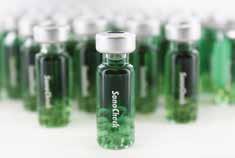
When the ultrasonic cleaner is supplying sufficient energy and condi�ons are correct, SonoCheck™ will change color. Problems such as insufficient energy, overloading, water level, improper temperature and degassing will increase the �me needed for the color change. In the case of major problems the SonoCheck™ will not change color at all.
TOSI®

Reveal the hidden areas of instruments with the TOSI® washer test, the easy to use blood soil device that directly correlates to the cleaning challenge of surgical instruments. TOSI® is the first device to provide a consistent, repeatable, and reliable method for evalua�ng the cleaning effec�veness of the automated instrument washer.
LUMCHECK™
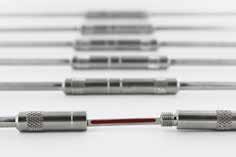
The LumCheck™ is designed as an independent check on the cleaning performance of pulse-flow lumen washers. Embedded on the stainless steel plate is a specially formulated blood soil which includes the toughest components of blood to clean.
FLEXICHECK™

This kit simulates a flexible endoscope channel to challenge the cleaning efficiency of endoscope washers with channel irriga�on apparatus. A clear flexible tube is a�ached to a lumen device with a test coupon placed inside; the en�re device is hooked up to the irriga�on port of the endoscope washer.
HEMOCHECK™/PROCHEK-II™
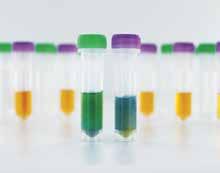
Go beyond what you can see with all-in-one detec�on kits for blood or protein residue. HemoCheck™ is simple to interpret and indicates blood residue down to 0.1μg. The ProChek-II™ measures for residual protein on surfaces down to 0.1μg.
Right measures and steps Chaun Powell, group vice president of strategic supplier engagement at Premier Inc., said that Premier members anticipate having enough needles and syringes to get through flu season and COVID-19 vaccines. “Lead indicators show that providers and supply chain stakeholders are taking the right measures and steps to be prepared,” he said.
“Over the next 18 months, we, as a nation, will have contracted to create more than 870 million syringes above normal production, which exceeds 5 billion syringes for the acute domestic healthcare industry alone. In addition, the private sector is also ramping up its production output. Assuming there are no unforeseen external variables, we anticipate having enough syringes.”
The situation with needles and syringes differs from that faced with N95s earlier in the year, he added. “With N95s, we, as a country, went from a national consumption rate (specific to acute

healthcare) of approximately 25 million masks annually to over 300 million. The twelve-fold increase was unsustainable. With syringes, our baseline is 5 billion consumed annually in the acute space. Adding another 800+ million syringes indicates an approximate 20% increase, but it is no comparison to the twelve-fold impact we saw with masks.” What’s more, the U.S. healthcare supply chain has had the time and foresight to increase production and inventories of needles and syringes, he said.
Premier members express confidence that their physician practices will have enough needles and syringes to meet upcoming demand, added Powell. “In our June survey of acute care members, we asked our members how adequate they felt their inventory of vaccines was in physician offices. Eighty-three percent said they had an adequate supply, and in fact, a small number (2%) noted they were overstocked due to the decrease in other procedures.”
NOW YOU CAN
Gain Efficiency without Compromise
Advanced Catheter Securement that Can Reduce Costs
No hard plastics that can lead to costly pressure injuries
Stays in place up to 7 days, reducing materials costs and nursing time
No additional materials required for application or removal
Helps reduce the risk of complications
Available with PrevahexCHX™
Antimicrobial Transparent Film Dressing
